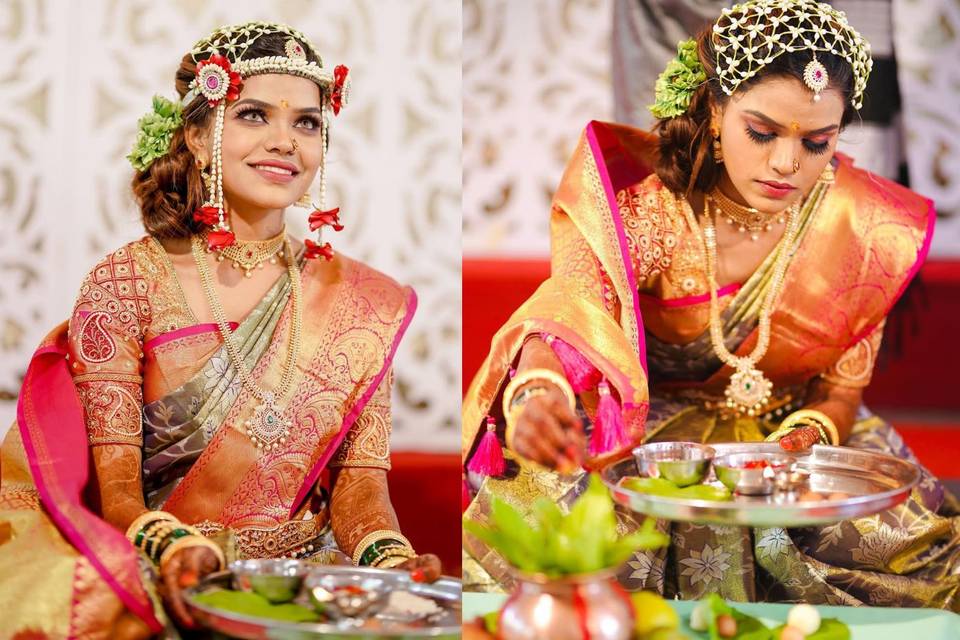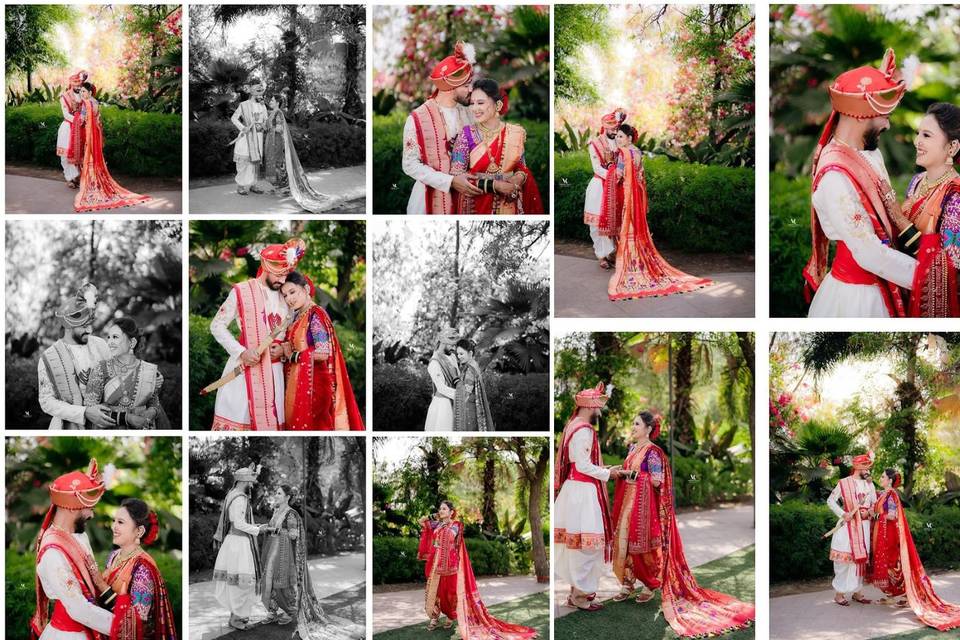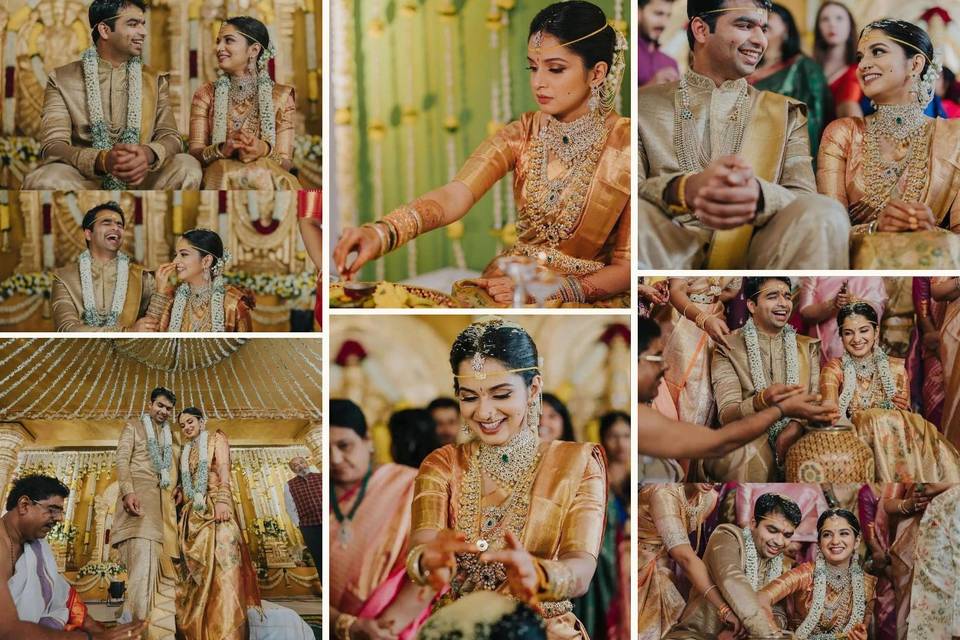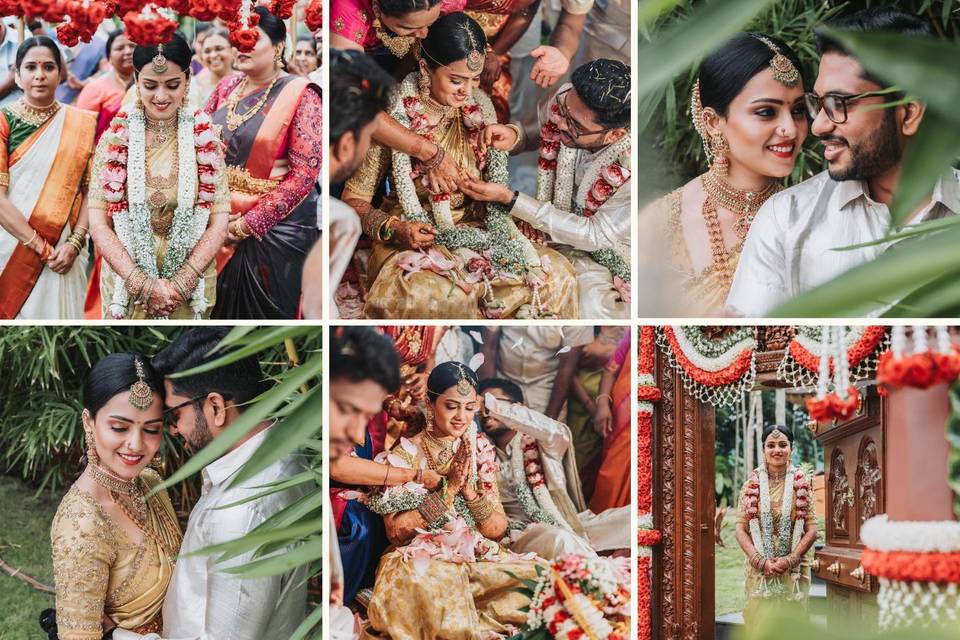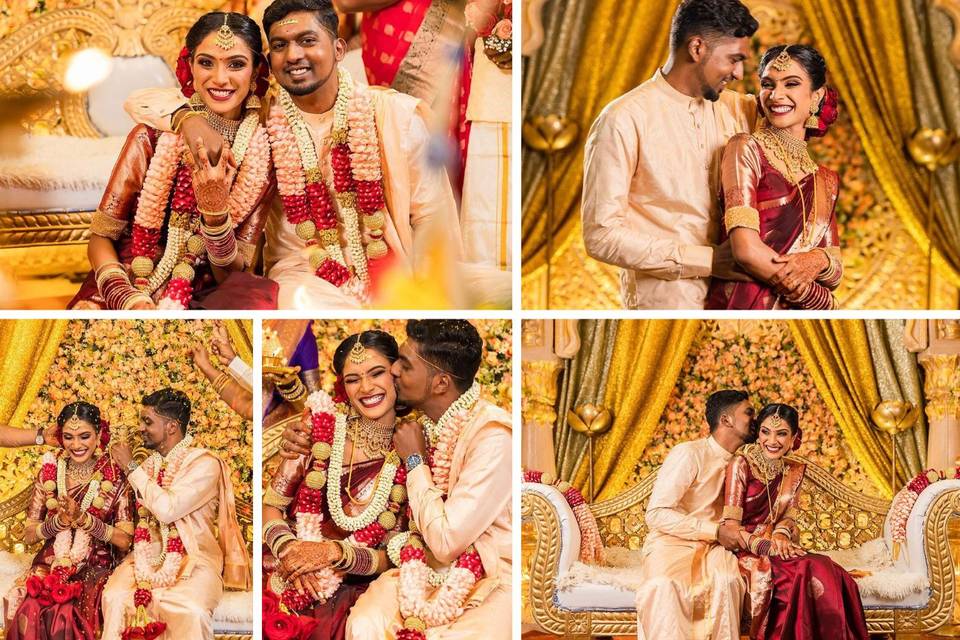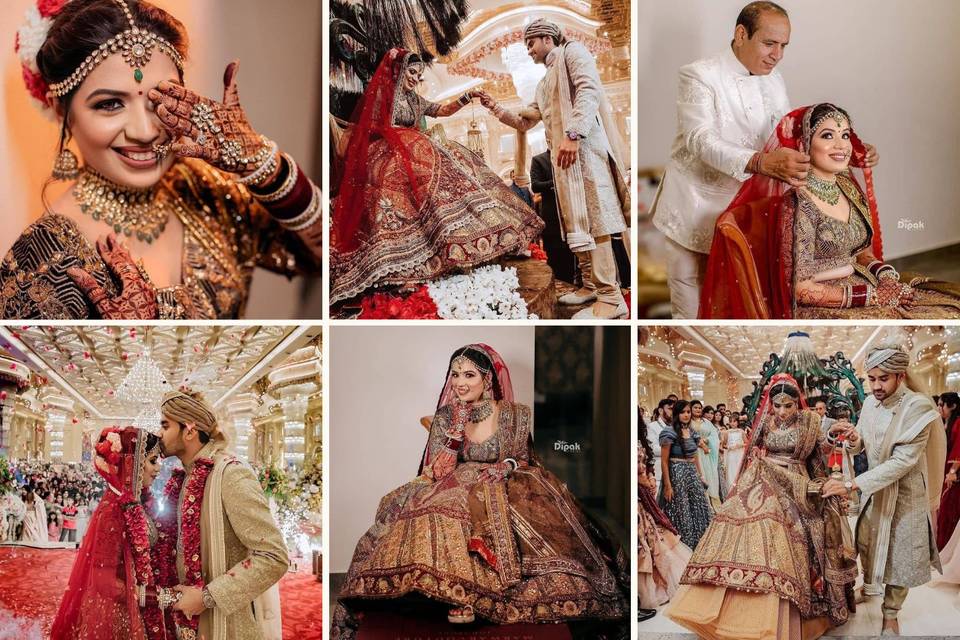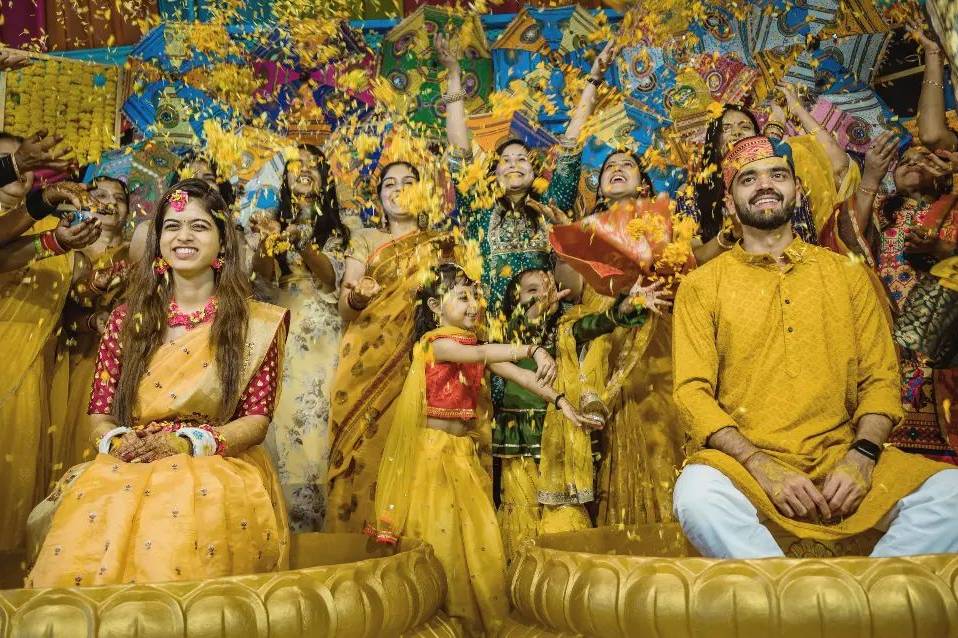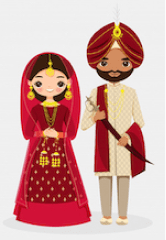Kashmiri Pandit Wedding: Beautiful Culture & Traditions of the Valley
Discover all about the elaborate rituals to a sacramental commitment between the two families that make a Kashmiri Pandit wedding a regal & unforgettable affair.
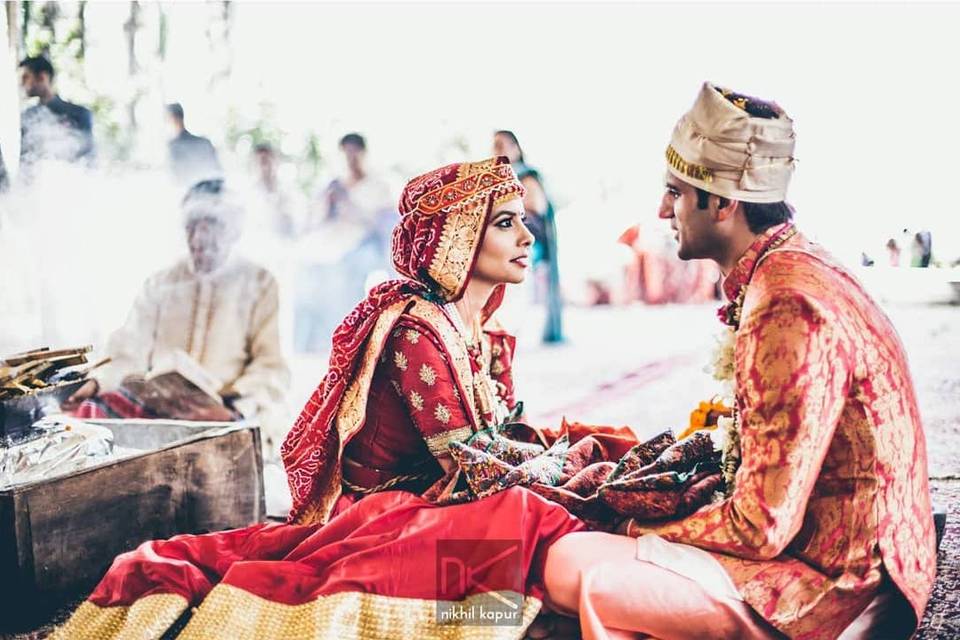

Cradled in the beautiful valley of the Himalayas, Kashmir is not only a picturesque destination but it is also a place that is rich in cultural heritage. Amidst their rich culture and ethnicity, the Kashmiri Pandit wedding is nothing short of a breathtaking fairytale breathed into life. From their pre-wedding ceremonies, the wedding outfits to the wedding - it is a sequence of mesmerising elements.
Kashmiri Pandit arranged marriages happen with the blessing of both the families and many factors like the family virtues and socio-religious factors are taken into consideration before they become the prospective bride and groom. The families of both the bride-to-be and groom-to-be match the teknis or horoscopes of the girl and the boy. Once the horoscopes match with their astrological factors, the families agree on the proposed wedding. The bride's family then proposes a date that is further approved by the groom's family. The pandit ji (priest) then puts a seal on the date for the wedding.
Once these formalities are taken care of, the wedding begins in full fervour. We have prepared a detailed guide to walk you through the cultures and rituals of Kashmiri Pandit weddings. This will not only help you to understand and appreciate the rich heritage of the Kashmir valley but also guide you rightly if you are planning a Kashmiri Pandit wedding. Read to know.
The Pre-wedding Ceremonies in a Kashmiri Pandit Wedding

Image Courtesy: Level Up Studio
There are 12 pre-wedding ceremonies that the bride and groom's families celebrate that leads to the wedding ceremony. Here are all the details of each of these pre-wedding ceremonies in-depth.
Kasamdry
The formal commitment ceremony between the two is known as the Kasamdry. The elderly family members from both the families meet in a temple where they exchange flowers as a formal agreement and commencement of the celebrations. The bride-to-be's family prepares a traditional Kashmiri meal for all. The eldest aunt of both the bride and the groom prepare a dish called var - a special rice pudding in Kashmir and distributes it among the neighbours and relatives.
Gandun
The family priest fixes the date of a formal engagement ceremony as per the Kashmiri calendar. This ceremony takes place in front of an idol that they worship. An exchange of gifts also takes place between the bride and groom that include lavish festivities, traditional meals and exchange of rings. The girl's family also gifts a trousseau including money, fruits, dry fruits and nabad or misri (sugar lumps) to the groom's house.
Livun
Livun is a ceremony that needs both the bride and groom's families to clean the house. Ana suspicious date is picked for the Livun ceremony. Traditionally the Kashmiri houses were mud huts and on Livun these mud floors were made to look new by applying fresh mud and water mixture on them. Now it is more about cleaning the house to get it ready for the celebrations. The married women in the families attend this ceremony in the bride and groom's respective houses. The parents of the bride and groom then gift these relatives with some cash or clothing and so on.
Wuri
On the day of Livun, the waza or the family cook puts a mud-and-brick oven called wuri in the backyard of the house where all the food for the wedding ceremonies will be cooked. Meat is forbidden in a Kashmiri pandit wedding traditionally and only traditional cuisines are cooked. However, millennial Kashmiri Pandit weddings have their meals arranged for and cooked at the venue or in a hotel/restaurant.
Wanvun
The Livun ceremony is followed by the Wanvun ceremony. This involves musical sessions that are held in the bride and groom's homes respectively. The relatives and neighbours participate in singing folk songs. The tumbak an acoustic musical instrument plays a significant role through the evening. The guests are then served noon or sheer chai (salted pink tea) in the end.
Krool Kharun
Krool Kharun is the decoration of the entrance of the houses of both bride and groom with traditional colours by the respective pof or the bua (father's sister) of the bride and groom. Again family members participate with singing and dancing and the traditional Vaer is prepared and a traditional lunch or dinner is served.
Maenziraat

Image Courtesy: Level Up Studio
On the evening of Krool Kharun ceremony, the bride-to-be follows an elaborate bathing ritual, during which her feet are washed by her maternal aunt. After this bathing ritual, her eldest aunt puts means (henna) on her palms and feet. Then the means is passed on to the other women present for the ceremony following which a delicious meal prepared by the waza is served to them. A little henna is applied on the groom's hands as well as an auspicious sign.
In more prosperous families, they also prefer to call a professional group of singers to keep their guests entertained through the night. They also have a main dancer in these professional groups known as the beach. Apart from the beach, there is also the lead singer, santoor player, a sarangi player, a rabab player, one harmonium player, the tumbaknari player and the natoo player.
Yagneopavit
If the Youna Janayu or thread ceremony has not been performed earlier for the groom, then it is conducted a few days before the wedding. This is known as the yagneopavit (sacred thread ceremony). If the groom has gone through this ceremony after his adolescence he has to wear a 6-strand thread before his wedding. In case the ceremony was performed in his younger days, he can wear a 3-strand youna.
Divagon

Image Courtesy: Afreen Digital Studio
A very significant pre-wedding ceremony, the Divagon marks the transition of the bride and groom from the Brahmacharya ashram to the Grihastha ashram. The bride and groom worship Lord Shiva and Goddess Parvati in their respective homes because this ceremony is observed separately. The family members and relatives of the bride and groom who participate in this ceremony keep a fast on the previous day. This ceremony is conducted before the holy fire by the family priest.
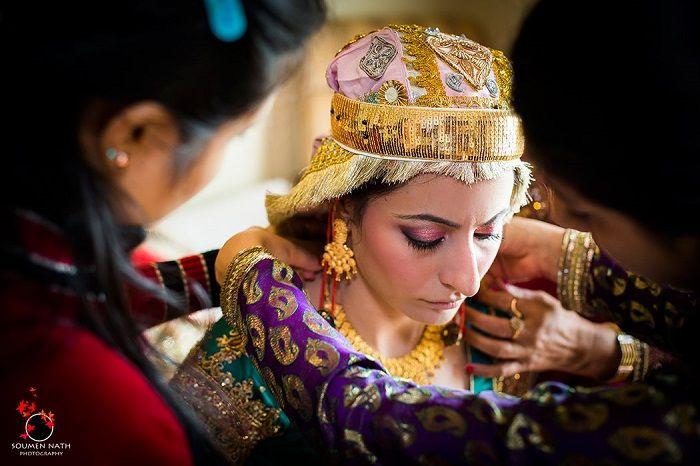
This ceremony also includes gifts like utensils and jewellery given to the bride by her family. These gifts are also places in front of the pious fire for blessings. A significant item in the jewellery that is gifted to the bride by her family includes dejaharu - an ornament worn in the ear that is made of gold tassels strung together on a sacred thread. It is supposed to pass through the middle-ear cartilage. A Kashmiri Pandit girl gets her ears pierced at the age of 2 or 3 and the dejaharu signifies the woman is ready for her matrimonial life.
Kanisharan
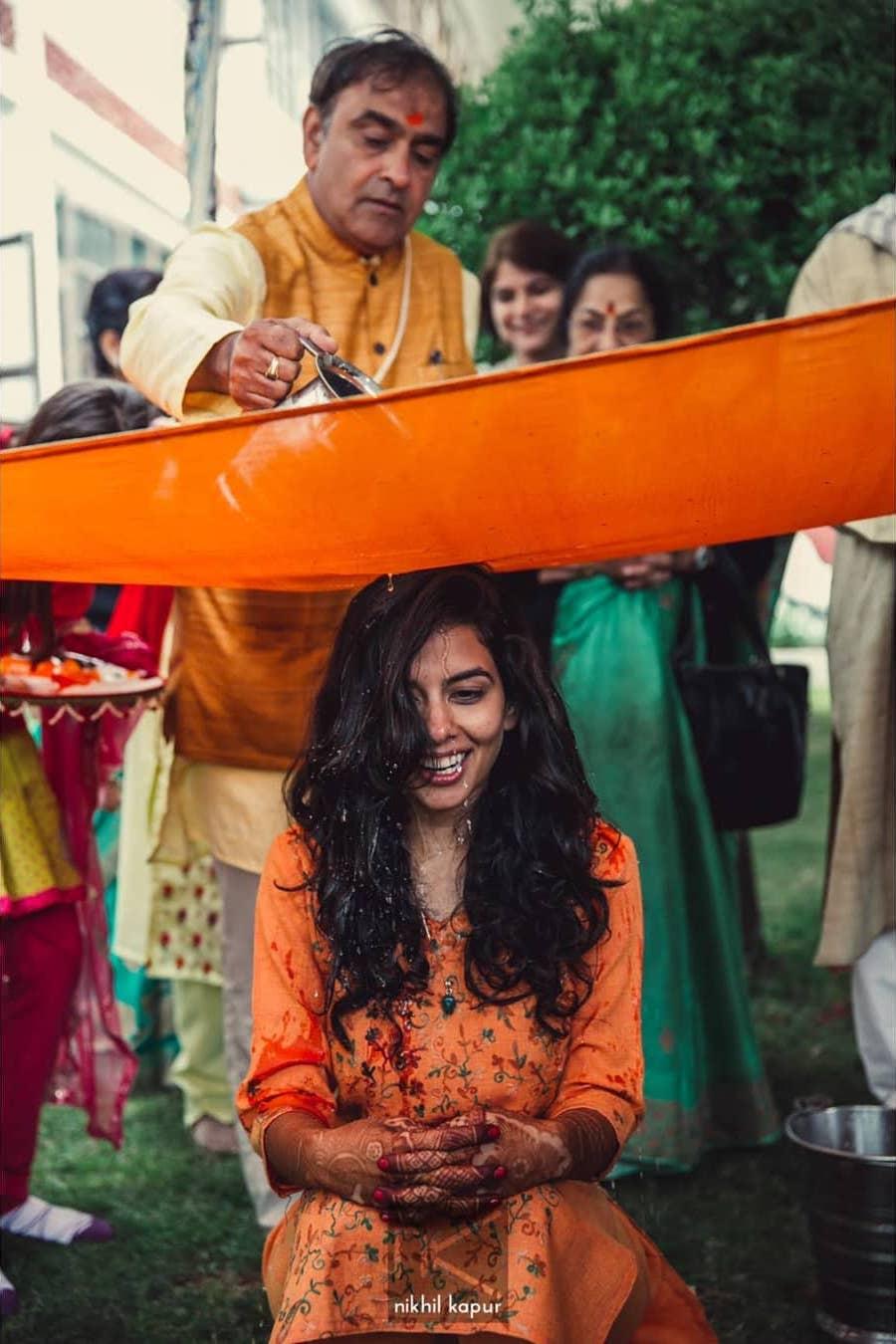
Kanisharan is a significant part of the Divagon ceremony itself. During this ritual, the bride and the groom are bathed in a mixture of water, rice, milk and curd. Along with these, flower petals are also showered on them. After this ritual, the to-be-wed couple changes into a new set of traditional wear.
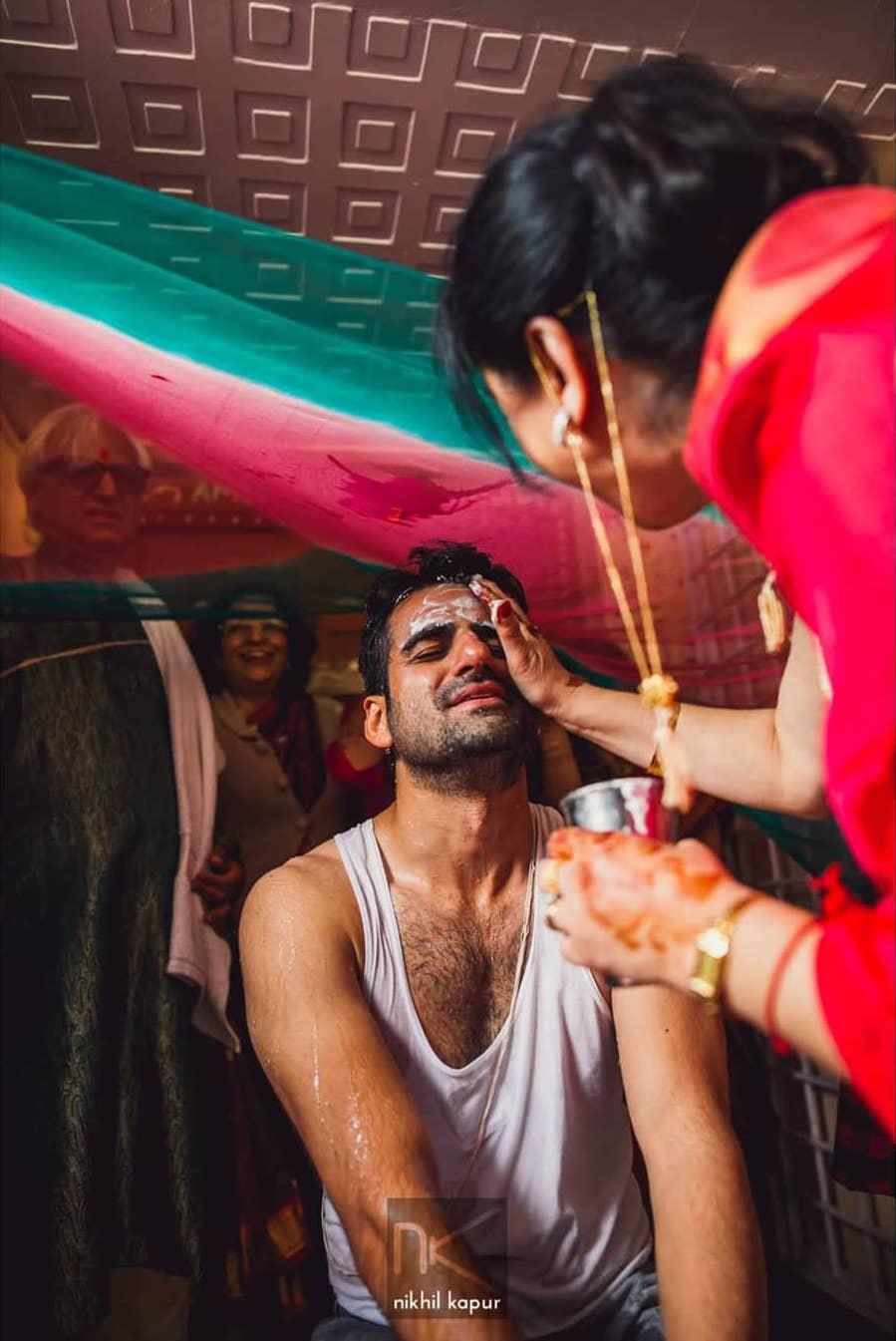
The groom is also given a Kanisharan. His mama (maternal uncle) presents him with a new set of clothing. This set consists of a pheran with tight, long sleeves, have a triangular neckline called taninaal and the upper lapel of this is tied at the left shoulder with piping called dov. This set also includes a waistband made of pashmina with the ends embroidered with a golden thread and zarbaf called louing.
Khir Tabche
Tabche is the traditional handmade pot made in the kiln. The women present for all the ceremonies are invited for dinner and are served with traditional Kashmiri vegetarian food followed by Kheer in the tabche. However, modern Kashmiri Pandit families have now started handing over the kheer in steel plates or plates made out of glass or china too.
Duribat
The Duribat ceremony happens on the same day for the bride and the groom. The maternal relatives of each are invited for a traditional lunch in the respective homes of the couple. The course fo meals begin with milk followed by the traditional kahwa and a traditional lunch. There is an exchange of gifts even in this ceremony where the relatives shower the bride or the groom with clothes given by the grandparents or relatives too. The immediate relatives of the bride and groom are presented with the tarang - the traditional headgear worn at the Kashmiri Pandit weddings.
The Wedding Outfits
The traditional Kashmiri Pandit wedding outfit is a beautiful one. Here are the details of the bride and groom's outfits.
The Bride's Outfit
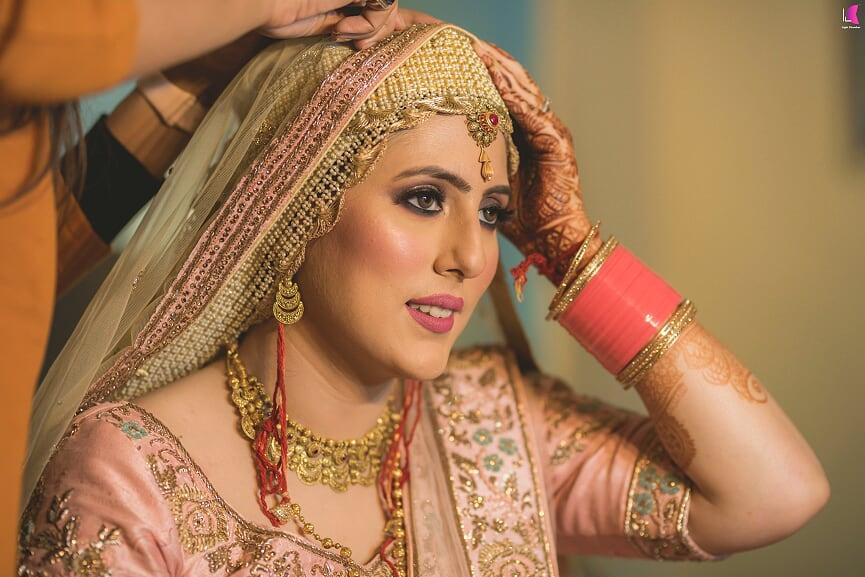
The traditional headgear that is worn by the bride is called the Taranga. The kalpush is a long starched and ironed white cloth - 3 centimetres width and 2 metres long. This is worn under the taranga and is wrapped over the forehead in layers. The zoojh (white scarf) is then wrapped above the kalpush and about half of the head is covered from behind and is left hanging over the bride's braid till the shoulder. The zoojh is made of fine silk and cotton on both sides and might be netted in the centre. The edges flaunt intricate gold and silk thread embroidery. A white-glazed paper is wrapped over the headgear and stitched from behind with a transparent sheet of slolite paper of the same width.
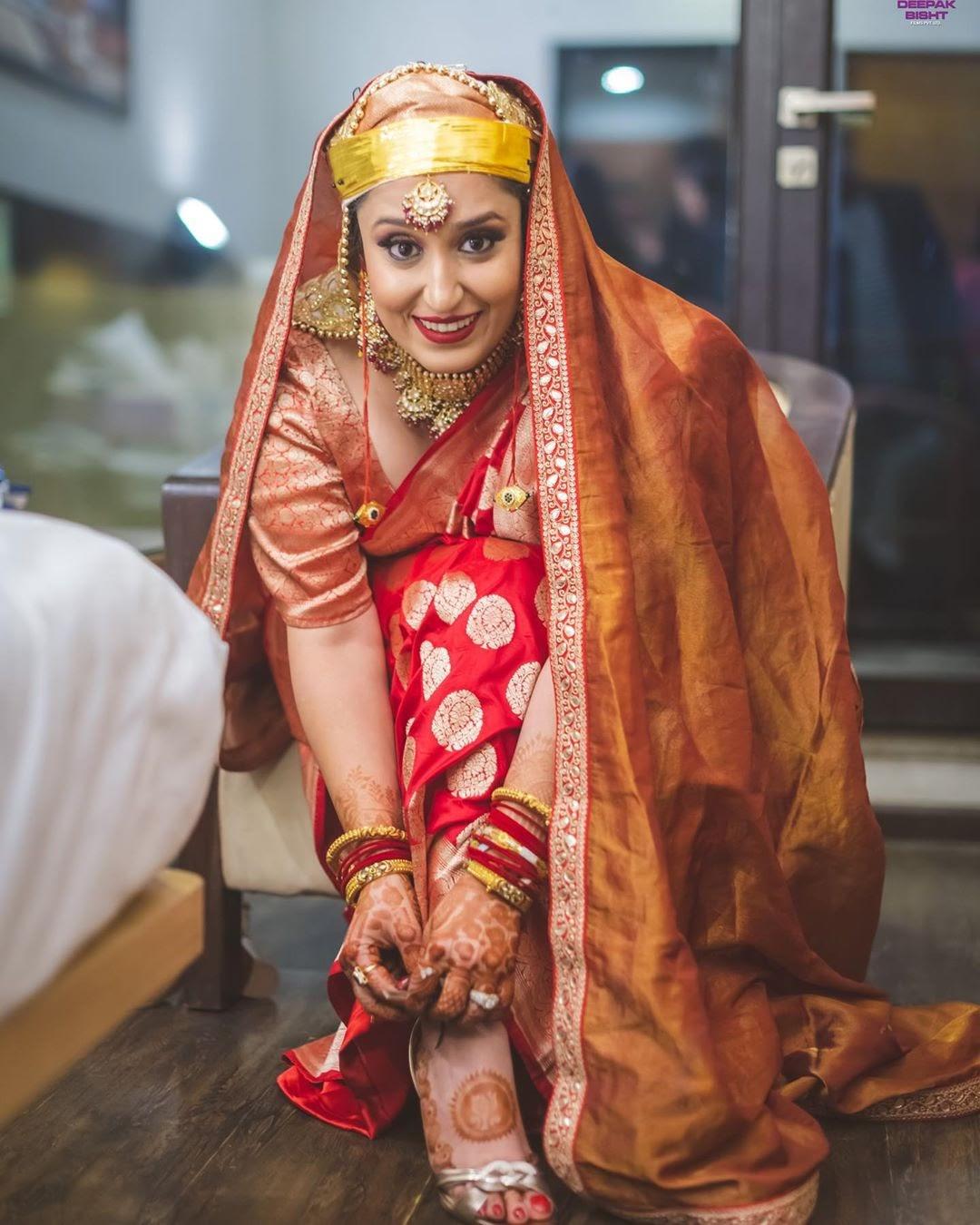
Image Courtesy: Sneha Badam
Another piece of starched muslin cloth called pooch is placed over this paper that covers over 60% of the headgear from behind leaving only 40% exposed. This cloth is left loose from behind reaching up to the knee joint or even lower, where the free end is appropriately bifurcated and curled separately. Two all-pins with black and golden heads are fitted into the headgear.
The bride's pheran is usually made of raffle, with ari or hook embroidery at the neck, cuff and edges. A belt about 2 metres long and one metre wide with the ends embroidered - halingadun, is tied to the bride's waist.
The Groom's Outfit
The traditional wedding attire is pheran. The groom wears a tweed pheran with a sword in his waistband and jootis in his feet. His headgear is a turban (gordastar) to which a peacock feather has been tied with a golden thread.
The Wedding Ceremony
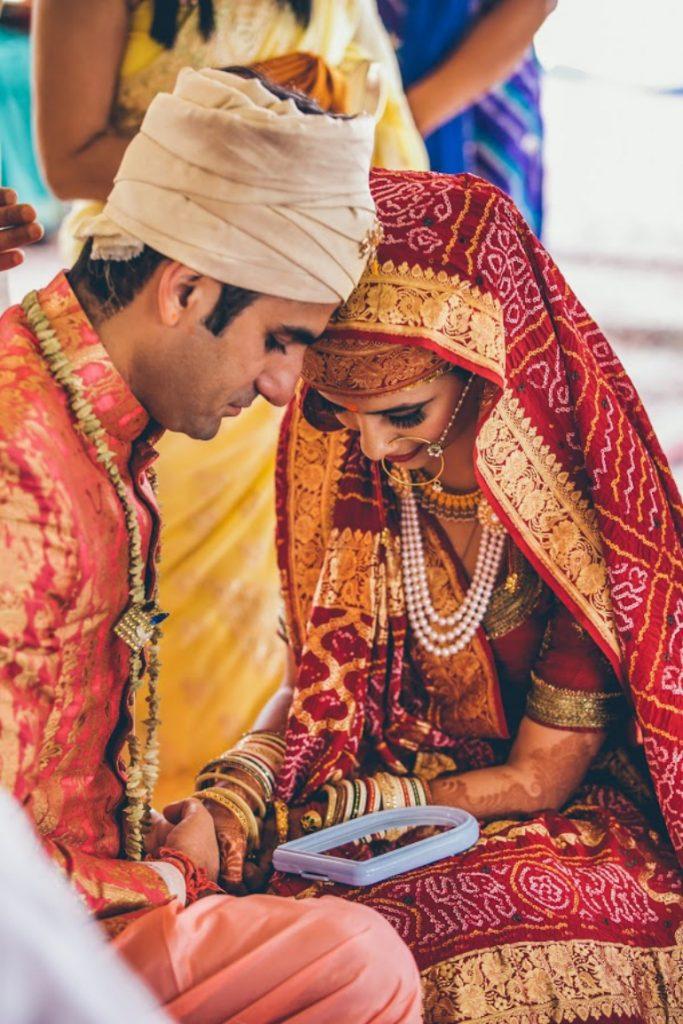
The arrival of the baraat
The family of the groom is warmly welcomed by the family of the bride at the wedding venue by blowing a conch shell. Nutmegs are exchanged by both the families as a symbol of lifelong friendship.
Lagan
There are seven Pheras in the Kashmiri Pandit weddings. The ceremony is known as Lagan in which the first vow is taken around the sacred fire by stepping on seven one rupee coins. At the end of the ceremony, both the bride and the groom feed each other rice.
Posh Puza

Image Courtesy: MP Singh Photography
At the end of the wedding ceremony, the bride and groom are made to sit down. A red cloth is placed on top of their head and the guests around them shower flowers (posh) while the mantras are being chanted from the Vedas. It is a way of worshipping the couple with flowers as Shiva and Parvati.
Vidaai
This is the time when the bride officially bids goodbye to her family. During this ceremony, the couple is made to stand on a wooden pedestal known as Vyoog and the eldest female member of the family kisses them thrice on the forehead. It is known as offering Nabad.
Post-wedding Ceremony
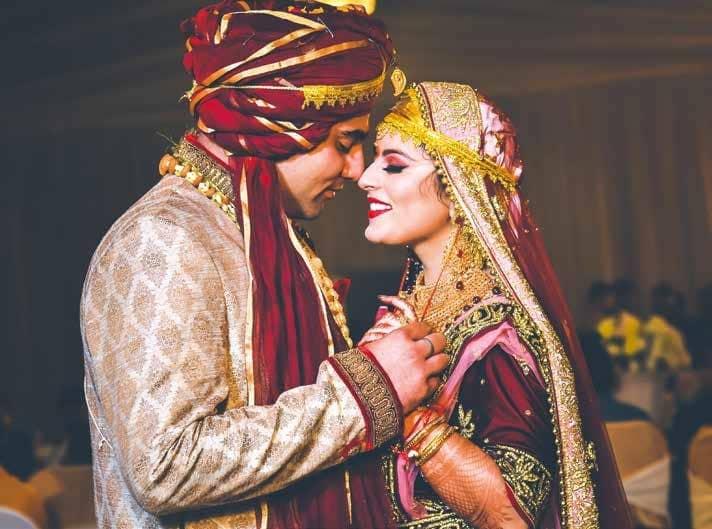
Image Courtesy: Pinterest
Satraat
The bride and the groom along with a few children visit the bride’s house in the evening. The parents of the bride give new clothes to the couple on this occasion, which is an essential and integral tradition explored in Kashmiri Pandit weddings.
Phirlath
This is the second time when the couple visits the bride’s parents. Again they are given gifts to mark the occasion.
Roth Khabar
On a Tuesday or a Saturday, the parents of the bride send a traditional freshly-baked cake known as Roth to their daughter’s house. Following which, the bride goes back to her maternal house for a few days with the person who brings the cake.
Ghar Atchum
It is a formal reception ceremony hosted by the bride’s family. After this, the bride returns back to her husband’s house.
And now, if you were to visit a Kashmiri Pandit wedding or make a checklist of rituals for your own, you have every base covered. If given a chance, make sure not to miss the opportunity of witnessing one.
Note: With valuable inputs from Samridhi Trisal.
If you are going to celebrate a Kashmiri pandit wedding, make sure to get in touch with the best photographers in your city for breathtaking memories captured for your wedding album.


